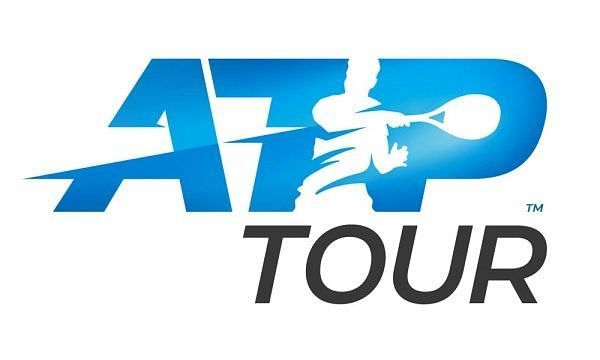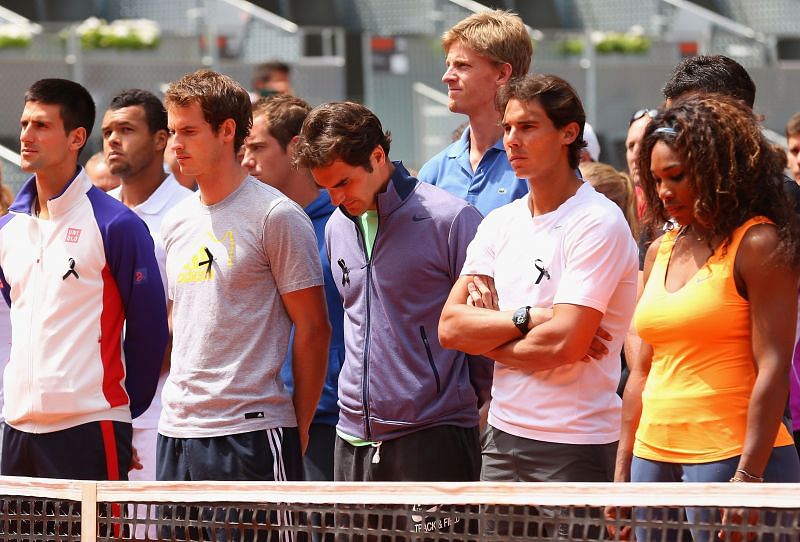
Everything you need to know about Novak Djokovic's new player union, & why it is being opposed

For a long time now, tennis players have been fighting for a bigger piece of the revenue raised by tournaments. And for almost just as long, that fight has has been led by World No. 1 Novak Djokovic.
The struggle came to a head on Saturday, as Djokovic resigned from the ATP Players Council in a bid to create a new players' union. The years of disgruntled public statements and extensive behind-the-scenes discussions seemed set to finally yield a tangible, real product.
It was in 2018 that Novak Djokovic had first tried to rally his fellow tennis players behind his ambition. The Serb believed the pros should be demanding more prize money at tournaments, and he let those at the very top know his concerns in exact detail.
After asking all tournament officials to leave the conference hall, Djokovic made his case to the likes of Roger Federer, Rafael Nadal and Andy Murray. He made an elaborate speech about the need of a breakaway players' union to battle for greater financial reward, at not just the four Grand Slams but all other tournaments too.
A lot has happened since then. In particular, Novak Djokovic's authority has come under the scanner, due to the way he organized the ill-fated Adria Tour. Many have come to question the Serb's leadership capacity; all they see when they look at the former Player Council President is 'quack'.
But Novak Djokovic hasn't let any of the backlash come in his way. In a headstrong move that has strongly divided the tennis community, he has confirmed the formation of the Professional Tennis Players Association (PTPA).
But what exactly is this new player association all about, and why has it caused such an uproar in the tennis community? A little background information might help here.
Not the first time a players' union has taken hold of tennis world

Before the 70s, tennis was in a similar situation to the one Novak Djokovic & Co. find themselves in today. There was no transparent communication between major tournaments and players, the latter of whom were almost powerless.
There were several independent tours back then, unlike a singular world tour. For instance, the supremely influential tennis personality Jack Kramer would contract the world's best players or 'professionals' - to play in his global tour events. The players were given contracts for showing up, while the Slams were limited to amateur players.
Those Slams were run by the ITF even then, who along with promoters like Kramer were the principal associations in tennis. Needless to say, these organizations had the final say in all operational and prize money decisions.
With time - and the increasing popularity of tennis - the pros started realizing their worth. They came to the conclusion that they would be better-served with a more player-centric association, and eventually in 1972 organized a coup against the higher-ups to form the ATP.
The ATP in its earliest form was essentially a players' union, which didn't organize any tournaments. The organization back then had a similar agenda to Novak Djokovic's new outfit: it wanted to coalesce the players' interests into one place and give them a better seat at the negotiation table.
Then in 1988, the players extended their political right by announcing that the ATP would break away from the main circuit and form its own global tennis tour. This decision came about due to the limited player representation and influence on the main circuit - a pattern that has again repeated itself in the Novak Djokovic-PTPA era.
Ever since then the ATP has been less of a player union and more of a sports governing body, with almost equal representation of the pros and the tournament organizers. In other words, whenever the players want to effect any change, they first have to get 50% of the organization - the tournament directors - to get onboard.
What does Novak Djokovic's PTPA actually want?

Given the evolution of the ATP over the years, it's not difficult to understand why the players have again raised their voice to get more pull at the negotiating table. With Novak Djokovic at the helm of the battle, they are angling for a bigger piece of the pie across all levels of the player fraternity - and many would say they deserve it.
According to Novak Djokovic's fellow PTPA member Vasek Pospisil, the goal of the rebel outfit is not to enrich the top echelons of the game but to increase the number of players able to earn a good living.
While the top tennis stars like Roger Federer, Rafael Nadal and Novak Djokovic himself have been raking in the moolah over the years, the lower-rung journeymen have been far less fortunate. There are several stories of players outside the top 100 struggling to make ends meet; the prize money at small events like Challengers is not nearly enough to cover the high costs of being a tennis professional.
On the face of it, Novak Djokovic's PTPA intends to create a whole new structure to address exactly that. By being independent of the ATP - and therefore of any influence from tournament directors - Djokovic hopes to bring about changes in the distribution of tournament revenue so that a greater chunk of it goes towards player prize money.
It must be noted that tennis' new 'bandits' have decided to break away not from the tour itself, but from the seven-person ATP Board of Directors. That board consists of the ATP President, three player representatives and three tournament representatives.
The players making up the PTPA have come to believe that the Players Council and the ATP board have not done enough to fairly represent the players' prize money interests. A more equitable distribution of tournament revenue is, in essence, at the heart of why the PTPA has been created.
In 2018 the USTA reported $380m in revenue for that year's US Open, but paid only $53m in player compensation. That amounts to a measly 14% of the total revenue generated.
While the Grand Slam revenue has continued to increase every year, the players feel that the share they get from it is much less when compared with their contemporaries from other sports.
According to recent findings by Walied Soliman of Norton Rose Fulbright, who will legally be representing Novak Djokovic's PTPA, the percentage of total revenue that tennis players receive is 'underwhelming' compared to professional leagues for American football, hockey, basketball and baseball.
Two years ago, Novak Djokovic had also complained that while American basketball leagues distribute around 50 percent of their income, the Grand Slams only pay around 7 percent to the participants.
Novak Djokovic's PTPA has been opposed by Roger Federer and Rafael Nadal, and here's why

Ever since Novak Djokovic stirred the pot by proposing the formation of a breakaway independent union, all tennis players have been posed with one big question: will they sign the agreement proposed by the PTPA?
While tennis players have long been battling for an increase in prize money, many have come to question the timing of Novak Djokovic's move. The sport has only just restarted after the COVID-19-enforced lockdown, and the officials are currently grappling with a whole host of issues. Dealing with the headache of a rebel association would only add to their woes.
But as the old adage goes, there is no time like the present. The PTPA's agenda has been met with a positive reaction from the likes of Diego Schwartzman, Matteo Berrettini, Taylor Fritz, Hubert Hurkacz, Cristian Garín, Rajeev Ram, Aisam-ul-Haq Qureshi and Rohan Bopanna, among others.
Standing firmly on the other side, however, are the two most powerful players in the sport: Roger Federer and Rafael Nadal.
Federer and Nadal, on behalf of the ATP Player Council, wrote a letter to all the players stating that they didn't intend to endorse the formation of a separate association. Their message was cloaked under the reasoning that Novak Djokovic's scheme did not have a "concise, analytical and detailed plan of what is next", and also that this was not the right time to discuss things of such weight.
However, some believe that Roger Federer and Rafael Nadal's disinclination towards the PTPA might be due to the fact that they benefit the most from the current pay structure on ATP. Federer and Nadal are the two most well-off players in the world right now; the pair have bankrolled around $120m in prize money over the course of their careers.
That kind of disproportionate prize money accumulation is also purportedly one of the things that the PTPA wishes to address. The new union's perceived goal is to give the players a better "ratio" in power and prize money talks, which includes a more uniform distribution of the spoils among players at different rungs.
That in turn could theoretically lessen Federer and Nadal's prize money at the top.
Another point to note is that with a new union, there would be more pressure from the players on the drawing board to do what's in their interest. That will automatically reduce the influence of the tournament directors on the table - tournament directors who have, historically, sided with Roger Federer and Rafael Nadal on a number of issues.
Are the men and women united in the prize money fight?

Asked about whether he would like to sign the PTPA's letter, Andy Murray claimed that he would have been more excited about the concept if the women were involved in it as well. That comment by the Scot has brought the recently proposed ATP-WTA merger into the debate.
The ATP-WTA merger, suggested originally by the 20-time Major winner Roger Federer, could have take on the player payment issue at its very root by creating uniform demand for men's and women's tennis. While there are a lot of sub-ideas to discuss in this regard - from sponsorship to revenue sharing - the fundamental idea of merging the tours looked good on the surface to many.
The move would have deeply examined the problematic "demand and supply" logic, which has seen women earn less than their male counterparts over the years, and possibly come up with a solution that benefited everyone involved.
Novak Djokovic's fight, however, is currently restricted to prize money for lower-ranked male players. And if the women were to join the discourse too, it would mean equal revenue sharing between the men's and women's tours - and potentially lower money for the men.
That's because if all events are combined, the revenue would remain the same, but the sharing would expand to include both the genders. The men, in effect, could earn less than they do now - which would be in direct contravention of Novak Djokovic's objectives.
The apparent sexism in the affair hasn't been lost on the tennis community, with many others echoing Andy Murray's concerns and demanding the involvement of women in the PTPA too.
All in all, Novak Djokovic's pursuit for pay increase seems to be a good idea in its basics. But there are also a fair few fallacies in the Serb's plan, which is likely to turn into a long tug-of-war for power between the players and officials.
The timing of it all is the thing that sticks out the most. Is this the right time for political wrangling in tennis when the lockdown has almost brought the sport to its knees? The livelihoods of tennis players as well as tournament staff members have been severely affected by the global crisis, and right now the biggest concern is to get back to some form of normalcy.
The US Open starts today, in what will be an overwhelming change in how tennis is played at the Majors. Perhaps Novak Djokovic's move to unionize for better distribution of money could have waited until at least the end of the New York Slam.